Arsenal Women welcomed five new signings to the club this summer, with Amanda Ilestedt, Cloe Lacasse, Alessia Russo, Laia Codina and Kyra Cooney-Cross recruited to bolster Jonas Eidevall’s squad. Arsenal said goodbye to Rafaelle, Anna Patten, Mana Iwabuchi and goalkeeper Fran Stenson this summer, as well as Jodie Taylor who joined on a short-term contract at the end of last season. Here is a lowdown on why the five new signings have been recruited and what to expect.
Amanda ILESTEDT
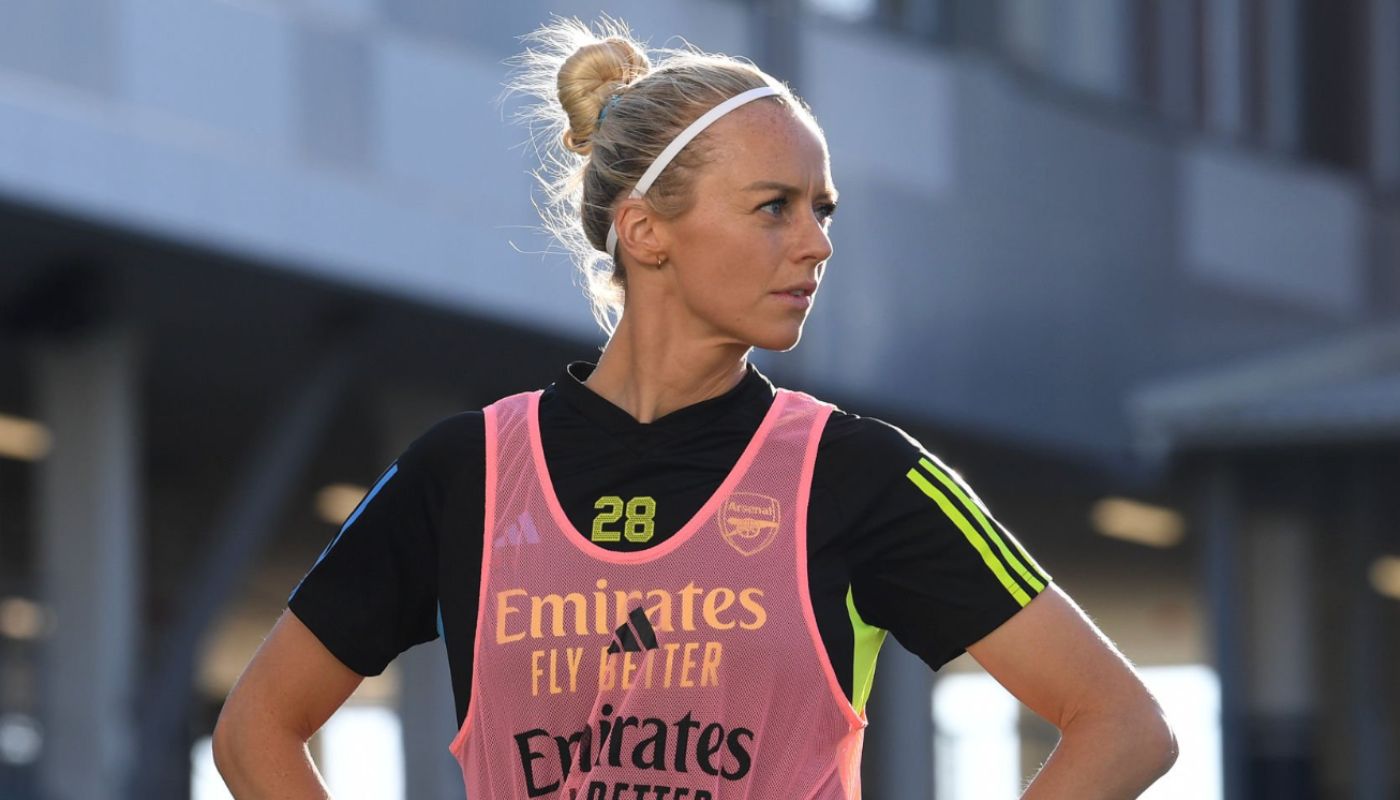
The 30-year-old is a right-sided centre-half signed on a free transfer from PSG having also played for Bayern Munich. The Swede played under Jonas Eidevall at Rosengard earlier in her career. Ilestedt is an experienced international adept at playing in a back three or back four. She can play at right-back too but I think it is unlikely that Jonas Eidevall sees her there in anything other than an emergency.
Leah Williamson is out until 2024 with an ACL injury and the right-sided centre-half role is very much hers when fit. Ilestedt will likely cover that position while Williamson gets back to full fitness. At 30 and with five league titles (four in Sweden and one in Germany with Bayern Munich) under her belt, she provides a very steady pair of hands in defence until Williamson returns.
Under Peter Gerhardsson, the Swedish national team defends with similar principles to Eidevall’s Arsenal, the defensive line is high and Ilestedt is very solid one v one and, as she showed with four goals at the World Cup, she is very impactful in the air both at defending crosses and setpieces, as well as attacking them.
Ilestedt can play at right-back and this is an area of the squad where Arsenal only have one recognised option in Noelle Maritz. However, I think it is unlikely that Ilestedt will be asked to play there because Eidevall likes his full-backs to overlap and join the attack and Ilestedt is not really of that profile. However, she has lots of experience playing in a back three at international level and I think Eidevall will use that system in big games and to close out tight games.
Go deeper: Swedish journalist Mia Eriksson profiles Amada Ilestedt
Cloe LACASSE
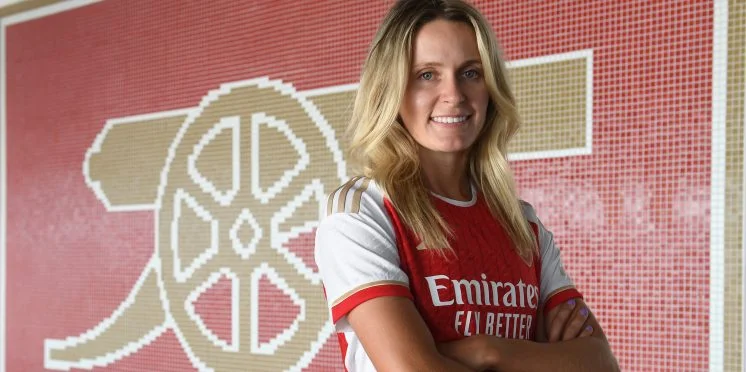
Lacasse is also 30 and has had a circuitous career route to date, moving from her native Canada to Iceland, before enjoying four excellent seasons at Benfica. Cases like Lacasse’s will become increasingly rare in women’s football as scouting and coverage improves and talents like Lacasse come to the attention of clubs like Arsenal far sooner.
Lacasse is a wide forward who can play on the left or the right and she profiles incredibly similarly to Beth Mead. She likes to take defenders on and find threatening positions in the area for either cutbacks or shots on goal and she is an excellent presser. Cover and competition for Beth Mead looked like a weak spot for the Arsenal squad last summer and that was exacerbated when Mead ruptured her ACL last November.
Eidevall played Katie McCabe and Victoria Pelova on the right-side in Mead’s absence, both fine players but totally different to Mead, who provided width and directness, whereas Pelova and McCabe, the latter of whom is left-footed, had a tendency to drift inside and operate more like a number 10. Mead is coming back to full fitness but her re-integration will need to be handled carefully. Lacasse offers a proper analogue to Mead so Arsenal don’t have to drastically switch styles without her.
Lacasse is an excellent counter-attacking forward too, which makes her a good substitute for certain game states. Her recruitment makes the attack less lopsided with Lacasse and Mead available for the right (as well as Brazilian youngster Gio) with Caitlin Foord and Lina Hurtig available for the left. Lacasse simultaneously offers variety while retaining consistency in the squad’s wide forward options.
Go deeper: Arsenal Women Arsecast with Marc Lamberts, who had previously scouted Lacasse
Alessia RUSSO

One of the most high-profile signings Arsenal have ever made in terms of media and wider public attention. The England number 9 decided to leave Manchester United for the Gunners on a free transfer this summer. There were a few strong reasons behind the recruitment of the 24-year-old. Firstly, if you can get Alessia Russo, you do it almost regardless of who you have in your squad.
However, Arsenal had a shortage in the centre-forward position in any case with Swedish international Stina Blackstenius the only out and out striker in the squad last season with Miedema now considered an attacking midfielder. Blackstenius took part in every single game in 2022-23 and that situation was not sustainable, with first choice left-winger Caitlin Foord the back-up for the central striker position.
Russo is the sort of hold-up, figurehead striker Eidevall wants for his football, where the number 9 is as much a facilitator as a goalscorer. She holds the ball up, runs the channels and competes in the penalty area in the way Eidevall demands. That explains why he moved Miedema, who played much more like a 9.5, back into a deeper role. Eidevall wants his striker to be physical, to bring others into play and to press like mad. Russo fits that bill. The coach is also convinced Russo can unlock greater goalscoring potential with Arsenal, having scored 10 WSL goals for United last season.
Go deeper: Why Arsenal pushed the boat out for Alessia Russo
Laia CODINA
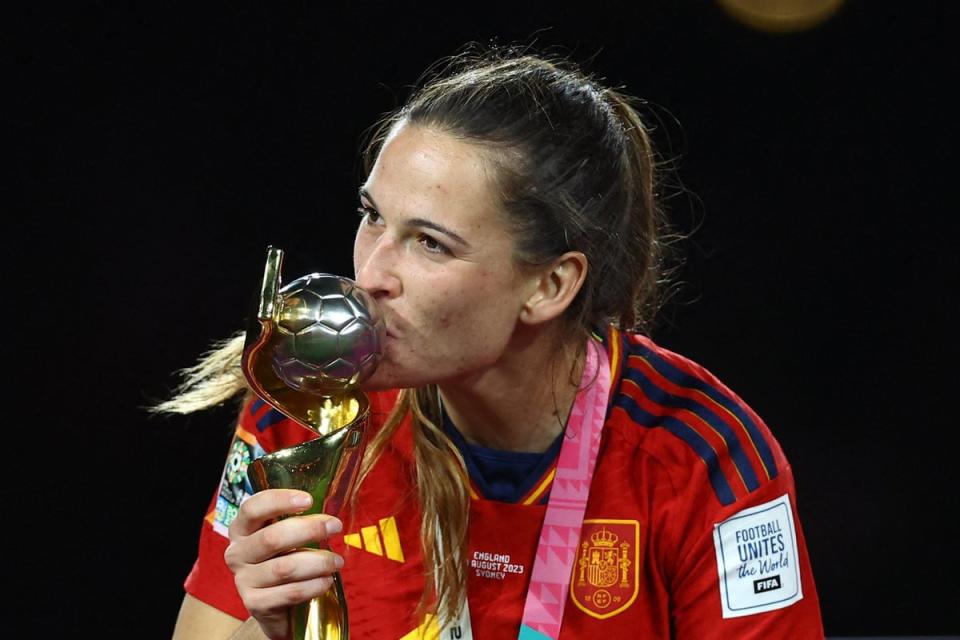
23-year-old World Cup winner Codina might be the most pivotal signing of the summer. Anna Patten had been out on loan for 18 months before leaving permanently for Aston Villa this summer. Mana Iwabuchi retired after effectively being frozen out in North London. Kaylan Marckese was the third-choice goalkeeper.
The one player Arsenal lost this summer that they really, really didn’t want to was Brazilian centre-half Rafaelle. Not only was Rafa a world-class centre-back in her own right but she was left-footed and top-class left-footed centre-halves are even more of a rarity in the women’s game than they are the men’s. Rafaelle was a unicorn and despite their best efforts, Arsenal could not prevent the player moving back to the US for personal reasons. Codina is her replacement.
Though she is right-footed, Codina plays on the left of a centre-half partnership. She left Barcelona because she found herself behind Mapi Leon, one of the few left-footed centre-halves in women’s football of similar quality to Rafaelle, in the pecking order. At the age of 23, she is ready to step out of those shadows and having been a starting member of Spain’s World Cup team this summer, she is accustomed to being a starter in pressure situations.
Put simply, the Codina signing has to work very well because she is stepping into some massive shoes. At 23, she is young but she is not a youngster and she has been developed at La Masia, her grounding is excellent but now she has to be one of Arsenal’s most consistent performers and go some way to matching Rafaelle’s influence in defence. She will also do this without Leah Williamson for the first half of the season at least.
Go deeper: Laia the Land- podcast with Alex Ibaceta profiling Codina
Kyra COONEY-CROSS
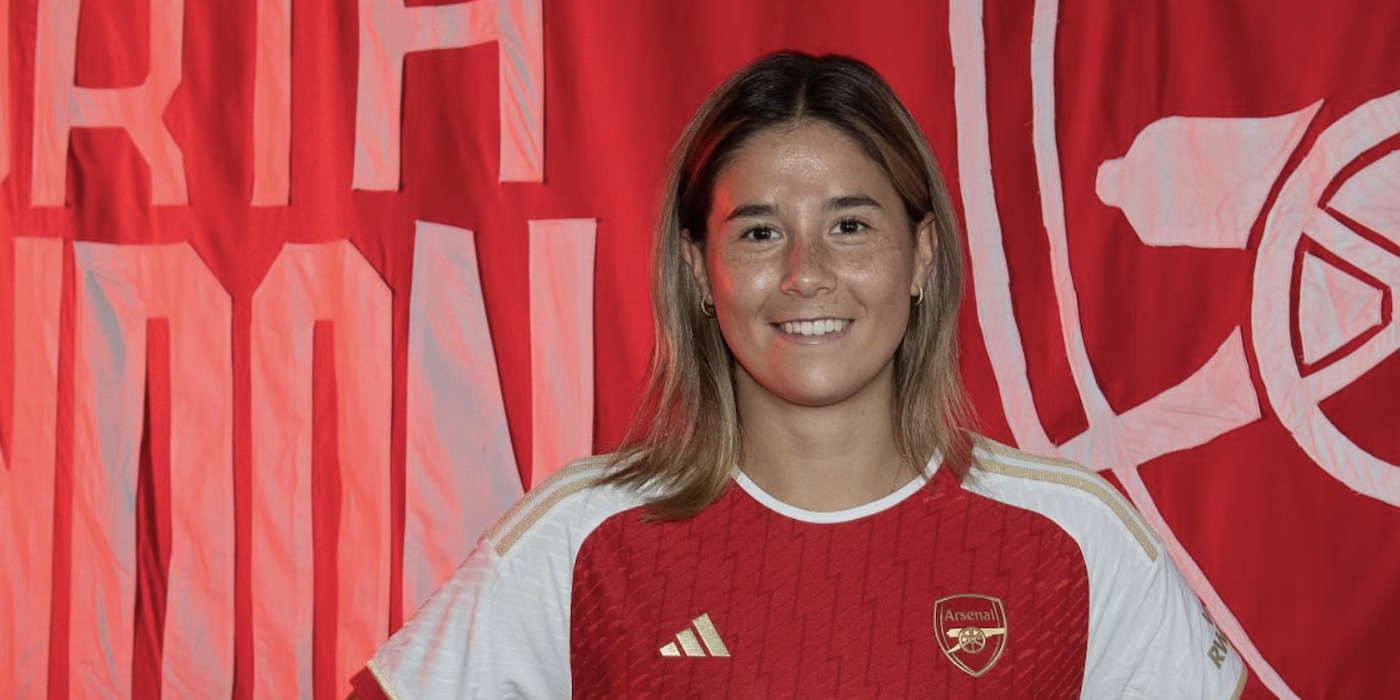
The 21-year-old was purchased from Hammarby in Sweden on deadline day. Cooney-Cross was three months away from being a free agent but Arsenal decided to meet Hammarby’s valuation to get the deal done on the final day of the summer window. Central midfielder Cooney-Cross was among the star performers at this summer’s World Cup for co-hosts Australia.
Arsenal were interested in the player during the World Cup but believed Chelsea had stolen a march on her signing, the Blues are believed to have backed off over Hammarby’s valuation given she would have been available on a free transfer in January. Cooney-Cross is a box-to-box midfielder who is adept at dribbling in tight situations and has two strong feet.
In fact, she profiles slightly similarly to captain Kim Little. Arsenal’s long-established first-choice double pivot consists of Wälti (30) and Little (33). In the last two windows, Eidevall has recruited Pelova (24), Kathrine Kuhl (20) and Cooney-Cross (21) to futureproof the engine room. Cooney-Cross is combative and creative and offers long needed competition and support for Wälti and Little.
Go deeper: Cooney-Cross bro, podcast with Melbourne based AAP journalist Anna Harrington.
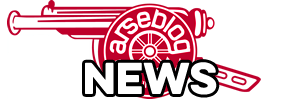




Thanks, Tim. Lacasse is such an important signing. The depth of the squad was tested almost to destruction last season and the only area where we clearly didn’t quite have *enough* was in attack. We stood up well in defence (yes, bad defensive errors were made at times but overall, the players excelled themselves). We created lots of chances, we adapted our game, were controlled when we needed to be, chaotic when we needed to be. But over the course of the season, failing to put away the chances that Mead would have scored with, not having the benefit of… Read more »
Looking forward to what Lina can do this season. Seeing her form in the World Cup suggests she shall be like a sixth new signing!
Very exciting, we have a La Masia graduate in the team, I’m pretty sure she can play also as defensive midfielder, had a profile similar to Patri Guijarro the first La Masia female graduate.
In summary, simply 5 first class signings ahead of the new season.